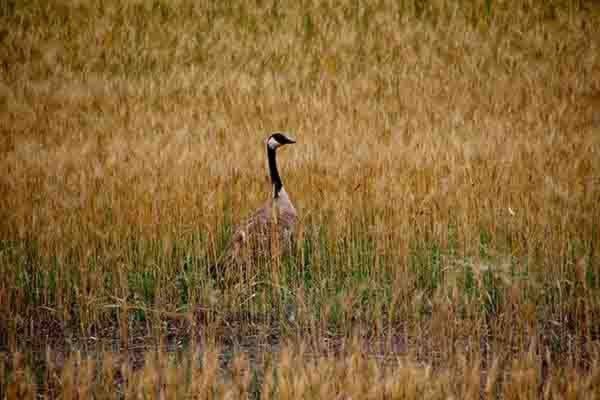A press release issued by the County of Wetaskiwin states, “the County of Wetaskiwin Council unanimously approved declaring an agricultural disaster for the County of Wetaskiwin due to severe drought conditions affecting portions of the County of Wetaskiwin. The declaration of an agricultural disaster by the County of Wetaskiwin has been made in order to raise awareness amongst the provincial and federal levels of government regarding the poor agricultural conditions facing producers in the County of Wetaskiwin that are of a similar nature to what is occurring throughout Alberta”.
A notification letter regarding the County of Wetaskiwin declaring an agricultural disaster will be sent to Oneil Carlier, Minister of Agriculture and Forestry, local MLAs for the County of Wetaskiwin, and the Alberta Association of Municipal Districts and Counties (AAMDC). This declaration, however, does not ensure that any programs or funding will become available from the provincial or federal government.
However, county administration has been advised that the province is creating a drought committee and that the agricultural director of Settler County will be sitting on this committee.
Stephen Majek, Director of Agricultural Services, County of Wetaskiwin presented council with information from articles in the July 16 issue of the Edmonton Journal featuring some highlights about drought. “In one of the articles it mentions that farmers have limited financial options to get them through the drought. The Alberta Agriculture Financial Services Corporation does offer some options, but farmers must register.” The options are:
Crop Damage - Across the province 72 per cent of farm land is covered by crop insurance. It provides a guaranteed level of production based on each farmer's historic yields, where it pays farmers the difference. Adjusters then verifiy the damage. It is generally within a month from the time the farmer put the claim in until the time they are paid.
Pasture insurance – 25 per cent of pastures in Alberta are insured. In most of the province, it's based on rainfall. The difference between this year's and historic rainfall determines the damages. Agriculture Financial Service Corporation paid out about $20 million in claims for damaged pastures. The corporation will pay claims once more this summer at the end of August.
Hay Insurance – 5 per cent of hay fields are insured in Alberta. The demand isn't quite as large, because farmers informally self-insure, such as using crop for feed, or having carryover hay from other years for feed. Hay insurance is paid out in advance of an adjuster's visit. The corporation has had 68 claims this season.
Emergencies - For emergency money, farmers can buy into a program called Agri-lnvest. Farmers invest 1 per cent of gross income, which the province and federal governments match. The Alberta fund held $535 million at the end of June.
Protection Against Profit Loss - Any farmer, including those who raise cattle, can subscribe to protection again. An Agriculture Financial Services Corporation program called AgriStability pays up to 70 per cent of the shortfall between the current year's gross margin profit and the historic profit. About 72 per cent of farmers in Alberta subscribe.
Majek provided council with maps illustrating the 90 day standardized precipitation index and the severity of the drought throughout the province. He strengthened his case by providing council with additional information. “Due to the drought, hay farmers are obtaining less of a hay crop and therefore less hay bales. One individual indicated that they received one-fifth of the crop, compared to that what they have received in the past. Another individual indicated that they only received three bales from 50 acres, where they would normally receive approximately two or three bales per acre. The hay prices within the province have already increased. Currently, bales are being sold as high as $180 per round bale.” He also mentioned that the extended periods of above seasonal temperatures with limited moisture has led to the moisture deficiency. “The barley crops are only boot high and cattle producers are considering selling livestock due to expected financial hardships.”
To add to the hardships, many crops have been pelted by severe hail storms in some areas of the province including a swath SE of Wetaskiwin. Drought is bad. Hail is bad. But when you get hit by both it is very disheartening.
